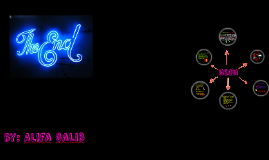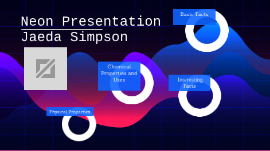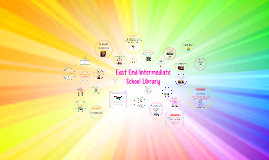Neon Presentation
Transcript: the pretty element Who discovered this stuff? What’s the small amount of gases in the rest of that small percentage of air? Neon! Works Cited 1. http://www.chemistryexplained.com/elements/L-P/Neon.html 2. http://en.wikipedia.org/wiki/Neon 3. http://www.helium.com/items/865611-the-discovery-of-neon 4. http://www.rsc.org/chemsoc/visualelements/pages/data/neon_data.html 5. http://en.wikipedia.org/wiki/Helium%E2%80%93neon_laser 6. http://www.brightneonsigns.com/neon-vs-led.html The End Neon- By Elise Doucette Unique Uses - Helium- Neon laser (for lectures and scientific uses) Then the liquid was boiled and the evaporated gases were captured. Cooled a small amount of the atmosphere till it turned into liquid What does it look like? The element itself at room temperature is actually colorless, odorless, and tasteless But when it’s heated, it becomes one of the most intense lights, giving off a bright yellow, a dramatic red, and a faint violet and green When-1898 Where-London, England With the help of the NEON (cc) image by nuonsolarteam on Flickr Spectrometer There are reports of Neon forming an unstable hydrate How was it discovered? Scottish Chemist: William Ramsay Neon is considered to be INERT - no true compounds of Neon exist... Purpose - Advertisement is what mainly uses neon - (signs, lamps, etc) ^ attracting and entertaining people all over English chemist: Morris Travers The Little Things Atomic # - 10 Atomic Mass - 20.12 Valence # - 8 Melting point- -248.67 C Boiling Point- -246.048 C Period 2 and Group 18 A Noble Gas Density- .899 g/liter Uses Now - High-voltage indicators (used to determine amount of volts, etc) - Lightning arrestors (used to protect other equipment from lighting and switching surges) - Vacuum Tubes Using “spectroscopy” they were able to see tiny amounts of gas by analyzing the light of an element when the element was heated. The lines of light appeared and were colors of bright yellow, a faint violet and green, and a dramatic red NEON 3 Stable Isotopes Ne-22 – used for production of Na- 22Ne-21 – used in Masers to study quantum physicsNe-20 – used for production of F - 18 nitrogen, oxygen, and argon make up 99.966% of the air on Earth Where is it found? - Earth’s atmosphere and Earth’s crust Abundance - Neon is the fourth most abundant in the universe and the fifth most abundant in the earth's atomosphere History And thus Neon was born Old Uses - Neon was used for lighting Moore Tubes - George Claude’s “Air Liquide” company produced the first two neon light signs - By 1920’s neon lighting became extremely popular and changed the advertising world - used for signs in hotels, restaurants, etc - the element also helped with the discovery of isotopes of stable atoms

















